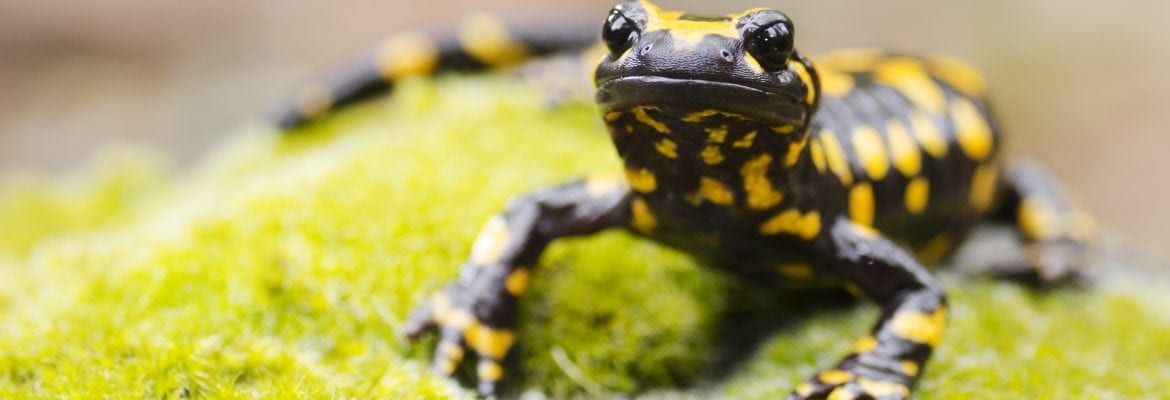Conservation status: IUCN – LC (Least concern), CITES – Appendix III.
Geographic range: Southwest and central Europe.
Physical description: This salamander is the largest species of the Salamandridae family and can grow up to 25 cm long. Females are slightly bigger than males but both have deserved their name due to their black and yellow or orange markings occurring in patterns varying from discrete spots to large splotches or bands. Their underside is usually dark grey with fewer spots.
Biology: The fire salamander spends most of its time hidden in shady crevices and is most active during mild nights. It’s inactive during both winter and summer’s temperature extremes and will typically be loyal to the same home range for many years. Its main defence against predators is its toxicity and its aposematic colouration. The large parotoid glands behind the eyes as well as rows of poison glands extending lengthwise down their body secrete neurotoxins.
Lifespan: Up to 24 years.
Food habits: Insects, molluscs, worms, larvae.

